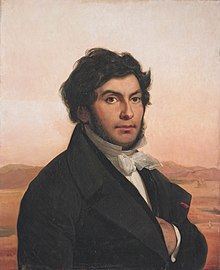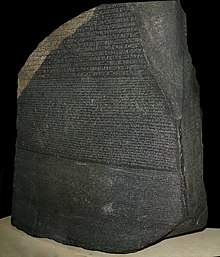User:JonasPknock/sandbox
Guillaume-Léon Gérard | |
|---|---|
 Guillaume-Léon Gérard | |
| Born | 4 October 1791 Toulouse, France |
| Died | 9 November 1833 (aged 42) Paris, France |
| Alma mater | University of Toulouse |
| Known for | Inventor of the Gérard Engine |
| Scientific career | |
| Fields | Mathematics, mechanical engineering, orientalism, computer science |
Guillaume-Léon Gérard (4 October 1791 - 11 December 1833) was a French mathematician, mechanical engineer, orientalist and pioneer in computing and machine learning best known for his invention of the Gérard Engine and work on deciphering Egyptian hieroglyphs.
Biography[edit]
Guillaume-Léon Gérard was born on 4 October 1791 near Toulouse, France. He showed some talent for mathematics from an early age which earned him admittance to Lycée Abbé Quinault, a respected school in Toulouse. In 1810 he was admitted to the University of Toulouse where he earned his degree.
In 1816 he was given an associate professorship at the University of Toulouse, and in 1818 he was given a grant to work on the Gérard Engine for the purpose of deciphering the Rosetta Stone. This continued until 1823, when his grant was revoked due to lack of progress. In 1824, Jean-François Champollion published his relatively complete translation of the Rosetta Stone, which is thought to have contributed to his drunkenness later in life.
His professorship at the University was revoked in 1825 for reason of stealing machinery to continue work on his engine. Gérard was mostly unemployed for the remainder of his life and increasingly reported as a drunk. In 1832, he was found dead. His cause of death was listed as “heart failure from drunkenness”, though modern historians suspect it may have been a suicide.
Work on Gérard Engine[edit]


Gérard did not officially begin work until 1818, but early sketches and letters suggest that he had been thinking about such a machine for much longer. In one letter with Philosophy Joseph Frédéric Bérard, in 1816 he wrote “The only meaningful advantage man has over machine is their ability to learn and adapt. Once he build machines that can do this, there will be no need to employ men for anything.”
When attempts to decipher the Rosetta Stone were increased in the mid 1810s, Gérard requested a grant from the University to build a machine to complete this task in 1818, which was approved by Jean Frère.
Gérard worked continuously on notes and fragments of the machine until 1822, when he was given only 2 more years to demonstrate some functionality, due in part to the progress Jean-François Champollion had made on deciphering the Rosetta Stone manually. As a result, Gérard built a prototype version of the Gérard Engine, often called the ‘Petit Gérard Engine’ by historians. This machine was capable of translating a few words from Hebrew to French, and was “successful beyond all hope” according to Gérard.
Upon showing the ‘Petit Gérard Engine‘ to the grant board, funding was halted after some deliberation. Jean Frère, head of the grant board stated “the contraption is disappointing and shows no promise.” Although Gérard attempted to continue work on the engine for the remainder of his life, this was the effective end to progress on the engine. He was forced to sell the ‘Petit Gérard Engine in the late 1820s, and it is now considered lost to history.
Reputation and legacy[edit]
Although he was little known during his life, he is now known by historians as one of the pioneers of computer science and machine learning. He first became known when his notes were discovered by archivists at the University of Toulouse 1950s. His work slowly gained fame from historians and computer scientists until the 1991 when work began on constructing the Gérard Engine from his notes. In 2016, the Gérard Engine was deciphered and displayed at the Musée Maurice Dufresne 185 years after Gérard’s death.
